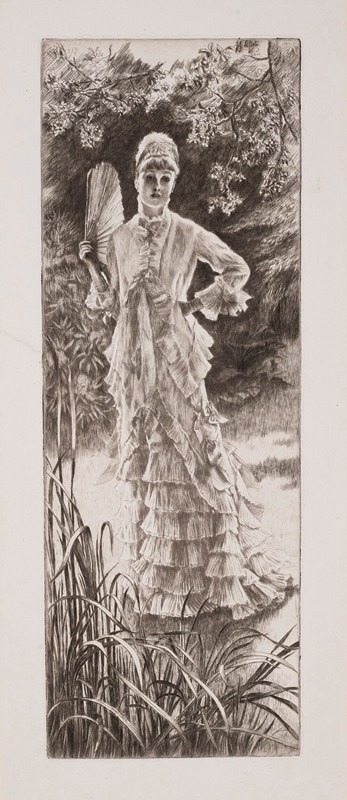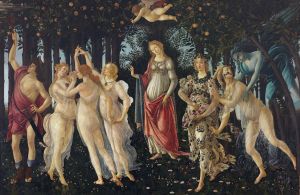
Printemps
A hand-painted replica of James Tissot’s masterpiece Printemps, meticulously crafted by professional artists to capture the true essence of the original. Each piece is created with museum-quality canvas and rare mineral pigments, carefully painted by experienced artists with delicate brushstrokes and rich, layered colors to perfectly recreate the texture of the original artwork. Unlike machine-printed reproductions, this hand-painted version brings the painting to life, infused with the artist’s emotions and skill in every stroke. Whether for personal collection or home decoration, it instantly elevates the artistic atmosphere of any space.
James Tissot's Printemps (translated as Spring) is a painting created by the French artist Jacques Joseph Tissot, commonly known as James Tissot. Tissot, born in 1836 in Nantes, France, was a prominent painter and illustrator of the 19th century, known for his detailed and elegant depictions of contemporary life, particularly focusing on fashion, society, and the leisure activities of the upper classes.
Printemps is part of Tissot's oeuvre that reflects his fascination with the themes of beauty, femininity, and the changing seasons. The painting portrays a young woman dressed in a fashionable outfit of the period, standing amidst a lush, verdant garden. The setting is characteristic of Tissot's work, which often features meticulously rendered outdoor scenes that complement the figures within them. The woman's attire, likely inspired by the haute couture of the late 19th century, showcases Tissot's keen interest in the details of fabric, texture, and design.
The painting is notable for its vibrant use of color and light, which evoke the freshness and vitality of spring. Tissot's ability to capture the interplay of natural light and shadow is evident in the way the scene is illuminated, enhancing the overall sense of realism and immediacy. The composition is carefully balanced, with the figure positioned in harmony with the surrounding foliage, creating a serene and idyllic atmosphere.
Tissot's work, including Printemps, is often associated with the Aesthetic Movement, which emphasized beauty and art for art's sake. His paintings reflect a blend of realism and romanticism, capturing both the physical details and the emotional essence of his subjects. While Tissot achieved significant success in his lifetime, his work fell out of favor in the early 20th century but has since been re-evaluated and appreciated for its technical skill and cultural significance.
The exact date of creation for Printemps is not definitively documented, but it is believed to have been painted during Tissot's later career, after his return to France from England in the 1880s. During this period, Tissot focused on a series of works exploring themes of love, spirituality, and the passage of time.
Today, Printemps is recognized as an example of Tissot's mastery in capturing the elegance and refinement of his era. The painting is held in a private collection, and its details are primarily known through reproductions and scholarly references.


















